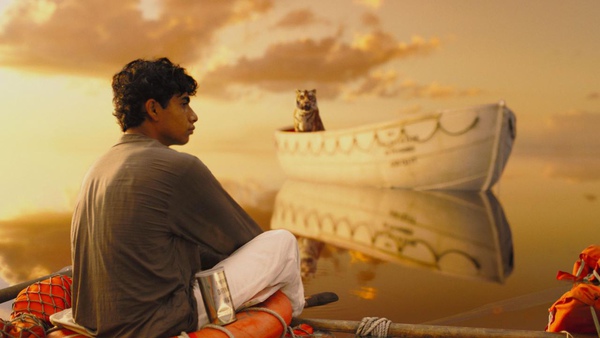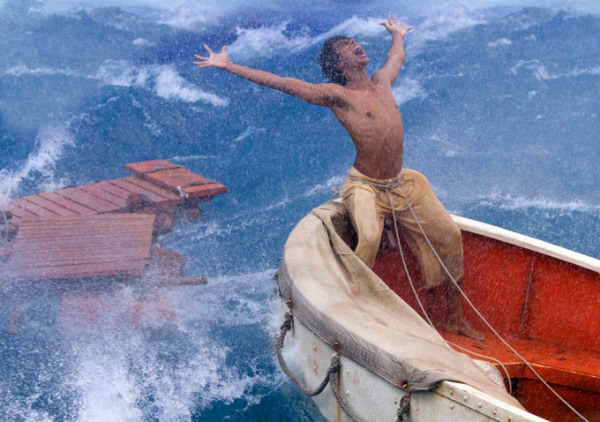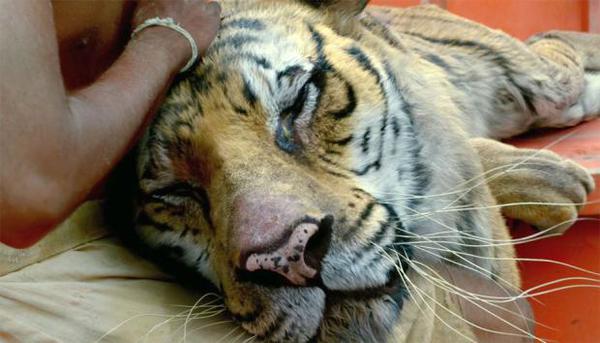Life of Pi Review

Man vs. nature is an ever-occurring theme in literature and film, but few dare tag on “vs. God.” Although to be fair, “Life of Pi” implies a certain connection between God and nature, that they aren’t exactly separate entities. Ang Lee’s adaptation of Yann Martel’s celebrated and oft-considered “unfilmable” novel tackles this crisis of faith by blurring the stark realism of a survival drama with a pure visual fantasy.
Lee justifies his visual liberties with the fact that Pi’s story is told by his adult self (Irrfan Khan) to an interested writer (Rafe Spall) who was told that the tale will make him believe in God. Although the script drops Khan’s voiceover narration for large portions of the story, it’s still told visually as if it’s a story rather than a re-creation of the real-life events that happened to Pi. This fact is crucial to understanding Lee’s artistic vision for this adaptation.
After “Crouching Tiger, Hidden Dragon,” who could doubt Lee’s talent? Yet he botched the “Hulk” movie and after that toiled in much more realistic work with “Brokeback Mountain,” “Lust, Caution” and “Taking Woodstock,” though the first of those did net him an Oscar win. “Life of Pi” is a reminder of his directorial gifts, the finest of which is his handle on fantastical realism.
The initial chunk of “Pi” pages through his upbringing in French India as the son of a zookeeper. The main goal of this portion is to communicate Pi’s religious curiosity, that even at 12 years old, he was exploring the notion of God through Hinduism, Christianity and Islam. The script from David Magee utilizes the dialogue to pose a number of intriguing theological questions, that while fleeting, inform the way we look at the rest of the film.
“Pi” really shines the moment the storm hits. Pi (Suraj Sharma) and his family were traveling on a freighter with all their animals with the intention of selling them in North America to start a new life when an incredible storm took it down near the Mariana Trench. Pi appears to be the lone survivor along with a zebra, a hyena, an orangutan and a bengal tiger — all five of which are on the same lifeboat.
Understandably, nature takes its course, and Pi and the tiger (named Richard Parker) are all that remain within a short period of time. As a boy, Pi nearly had an accident with Richard Parker, which angered Pi’s father, who then decided to teach Pi the difference between humans and animals. Now, however, Pi finds he’s going to have to find a way to coexist with Richard Parker in order to survive.
Magee’s greatest accomplishment with the script is establishing the relationship between Pi and Richard Parker and how that evolves throughout the film to the point where it becomes incredibly emotional. The narrative structure of the present-day moments and how they go back and forth leaves something to be desired, but the bond between these central characters is both believable and touching.
Richard Parker and most of the other animals are created using breathtaking CGI, with slight exception in the moments involving intense action sequences, but that’s to be expected. The knowledge that Richard Parker is not real (90 percent of the time) will rarely creep into consciousness during the film. At the same time, so many of the animals are given a fantastical sheen, such as several jellyfish and a whale that appears out of nowhere in one beautiful sequence.
Initially, these liberties with digital effects seem like they will discredit the story being told and our ability to believe it. But somehow, between the 3D, Claudio Miranda’s photography and everything else creating a context for these more magical moments, we only experience an increased sense of awe and wonder, that pulls us deeper into the film. Despite so much of the film taking place in and around a 20-foot boat, “Pi” almost never gets boring.
Newcomer Sharma gets the film’s only real acting moments and he delivers, but the film’s finest achievements deal undoubtedly with production and technical quality, whether it’s the cinematography, production design or Mychael Danna’s score. It can’t be easy to make a lifelike yet majestic film about a boy trapped at sea with a tiger.
“Life of Pi” is far more successful when it comes to eliciting emotion compared to striking upon themes of God and the workings of the universe, but it makes enough thoughtful points to succeed as an allegory in a meaningful capacity that doesn’t detract from the film’s greatest strengths.
4.5/5 Stars
Directed by Ang Lee
Written by David Magee, Yann Martel (novel)
Starring: Suraj Sharma, Irrfan Khan, Rafe Spall







0 Comments
You can be the first one to leave a comment.